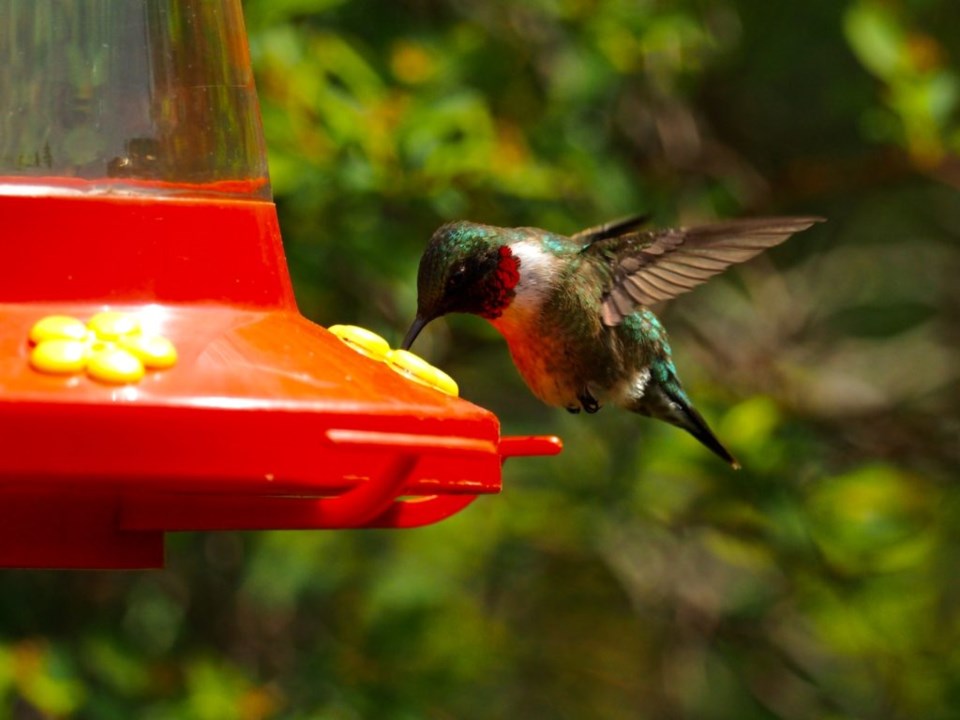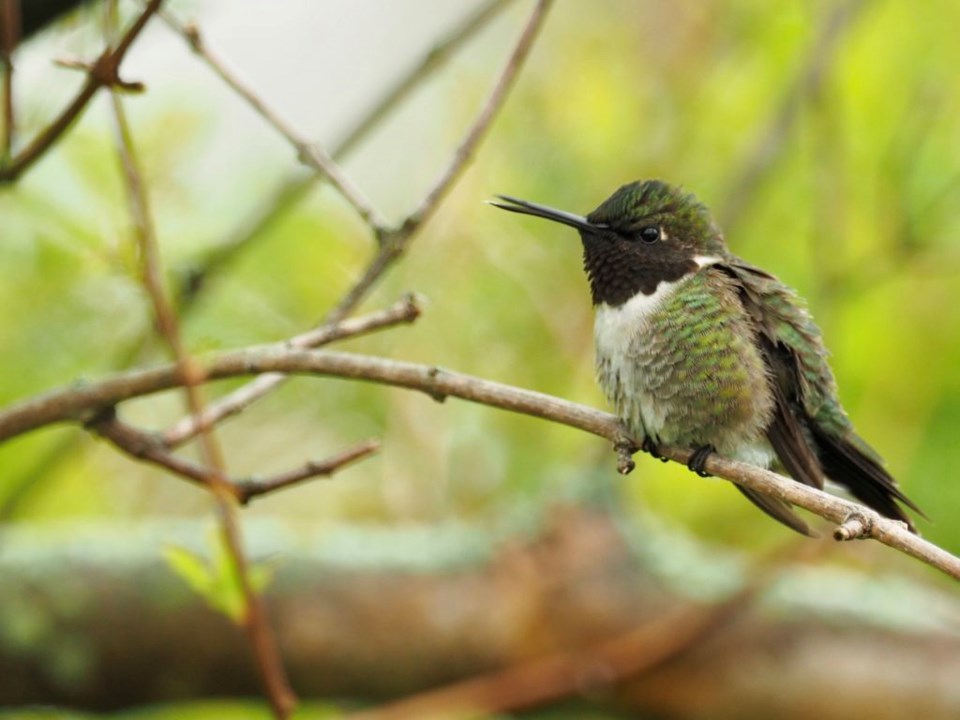
My wife and her friend in Orangeville have been closely following the annual spring migration of the hummingbirds for the last few weeks. There is actually an app that tracks their progress and location, giving daily updates. I wondered if gambling was involved? So, “they’re on their way” recently changed to “they’re here!”
The app indicated the hummingbirds had, indeed, crossed into Canada. Given the weather we had been having lately all I could think was they should have stayed south for a few more weeks. Brr!
With their supposed arrival came the next rite of spring, the search for the special feeder which had been carefully packed away last year. But who could remember where? Shed? Garage? Basement? I did find one, in a shoe box marked Hummingbird Feeder, but as it turned out, it wasn’t the correct one. We were, however, eventually successful at locating the correct one — exactly where we had put it in the fall, of course.
My wife carefully prepared the prescribed solution — four parts water to one part sugar. Experts in the field are insistent that only regular white sugar and no colouring be used, as anything else can be harmful. The solution also needs to be changed regularly, as it can go bad and harm the hummingbirds. Finally, we then placed the feeder at the back of the yard close to some bushes, where we had success in previous years. To my surprise, and actually while I was working on this article, a hummingbird appeared in our backyard, early in the evening on May 2.
Hummingbirds are small birds with a long, narrow beak used for extracting nectar from flowers. Interestingly, they have no sense of smell but can hear much better than humans (wonder how they determine that?). Another amazing thing is that they are the only birds that can fly backwards, thanks to a wingspan that usually exceeds their full length by at least one-fourth of an inch. They have the second fastest beating heart at 1,200 times per minute, only beaten by the pygmy shrew, which has a heart that beats at 1,511 beats per minute. All in all, a fascinating wee bird!
There are approximately 360 species, all of which are native to the Americas. The species that visit our area is the ruby-throated hummingbird (Archilochus colubris). These spend the winter in Mexico and Central America before beginning the long migration north. As with other migratory species, this spring and fall event is quite impressive. More so, I feel, for the hummingbird! According to experts who track their migration, they are, despite their small size, capable of great flight. The ruby-throated variety, for example is known to be able to fly over the Gulf of Mexico non-stop, a distance of a little over 800 km. Banded specimens have been tracked travelling an average of 40 km a day on their northward journey. On their southward journey they’ve been tracked at substantially more kilometres per day. (They must be in a hurry to get that perfect spot on the beach.) During migration, they may stop for periods of rest and renewal before continuing on. It is reported that they will return to the same area annually.

So, as I spotted our visitor through the window, I wondered whether this was the same little one that had graced our backyard last year. It did look kind of familiar asI watched it through binoculars, and then my camera lens. I was concerned it wasn’t ruby-throated, as its throa tarea looked to be black. But fellow birders assured me it was, indeed, a ruby-throated hummingbird.
The males do supposedly arrive earlier than females, according to thosewho study such things. Most likely to set up a nest to attract an incoming female. How admirable! Such forethought!
The next few days we anxiously watched for the little guy to reappear, but didn’t notice him. I was concerned about the cooler, drizzly weather that we seemed to be locked into for awhile. The little guy didn’t seem to have much meat on him, so I wondered if it might be too cold for him. At least, he could get some energy from the sugar solution. Also, a concern was the lack of spring foliage on our bushes, which would offer some cover from potential predators. But if he can travel such a distance, again, just to be with us, it probably knows how to look after himself!
“Oh, wait, maybe that’s it! Honey, where did you put the binoculars?”